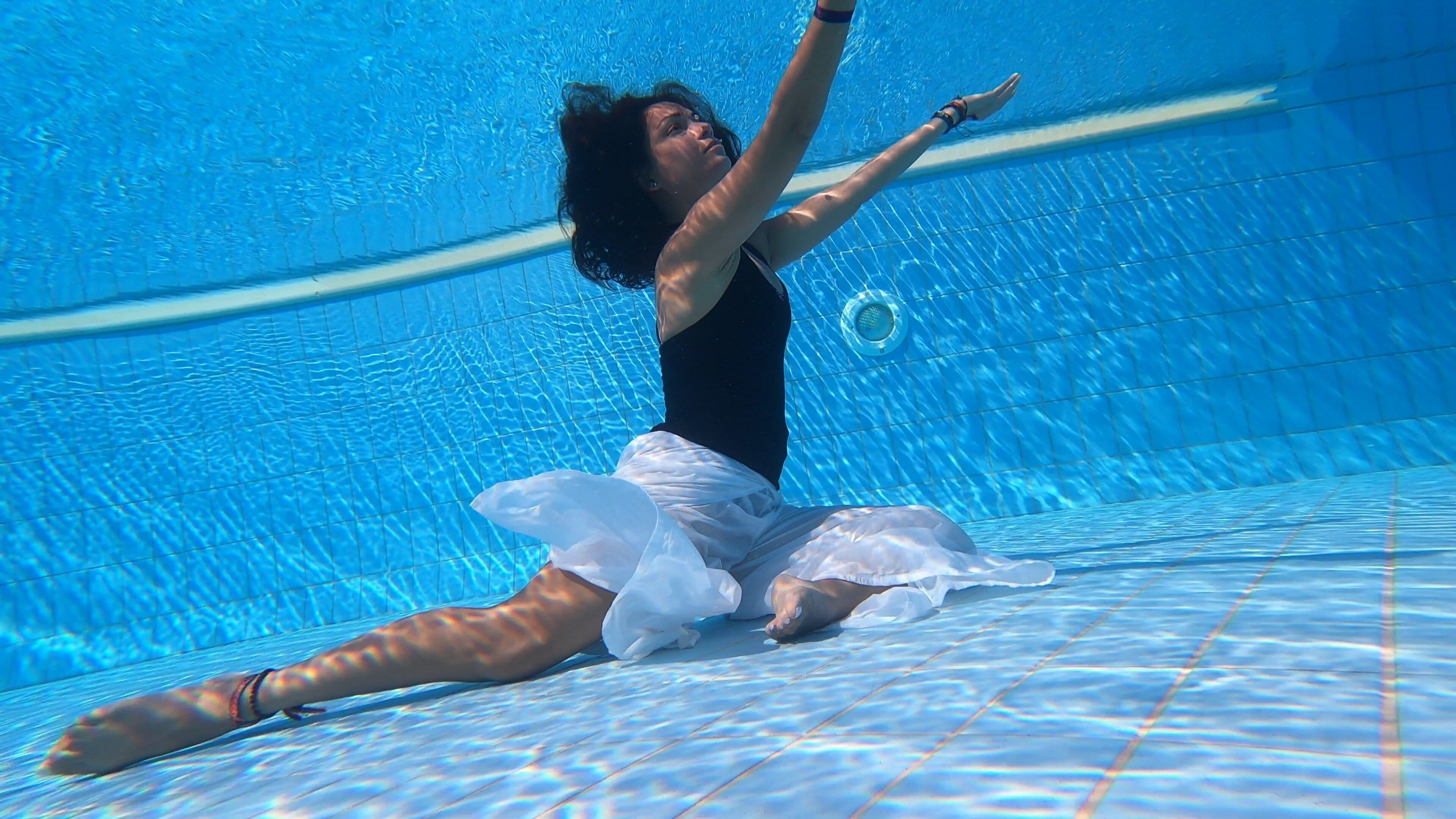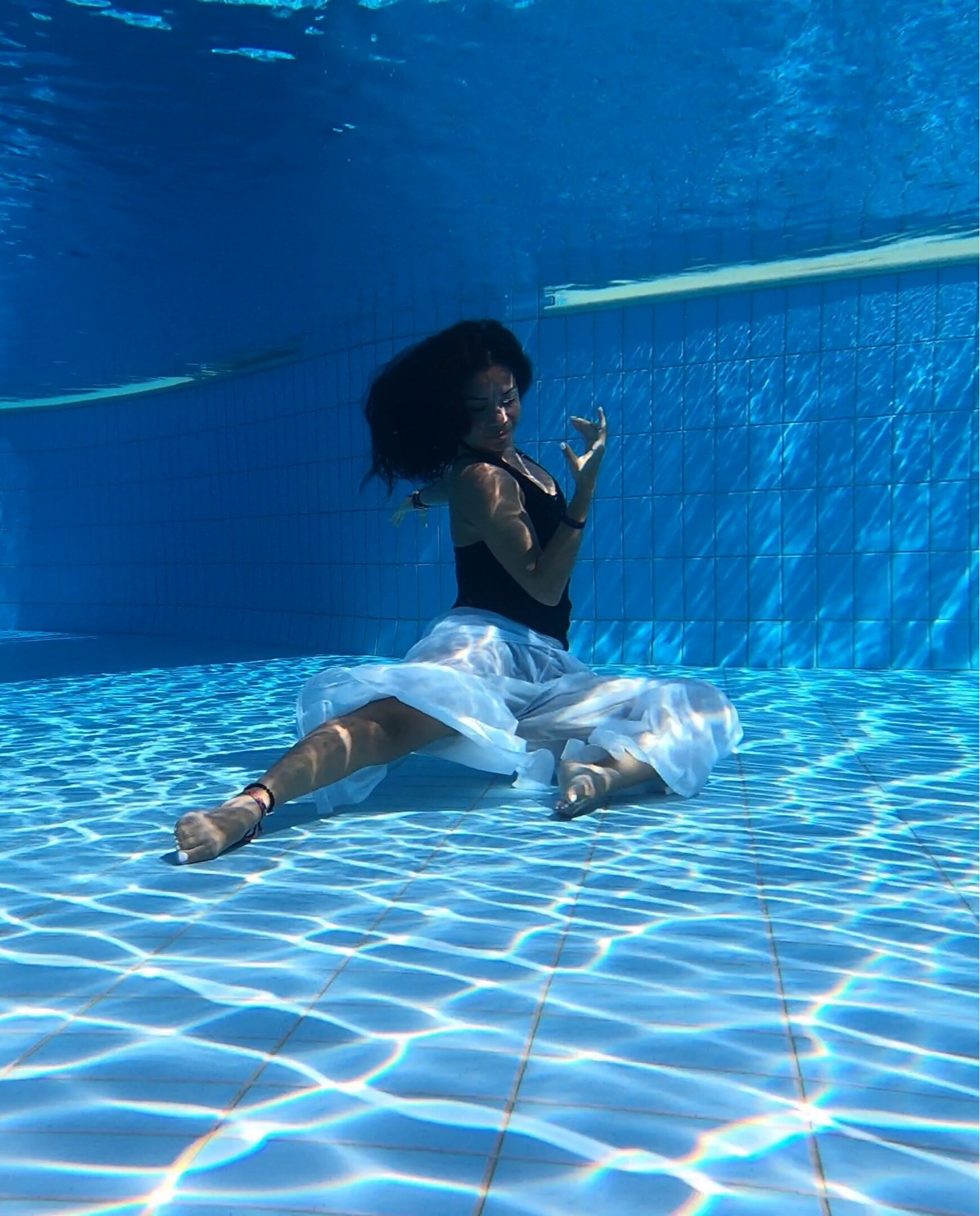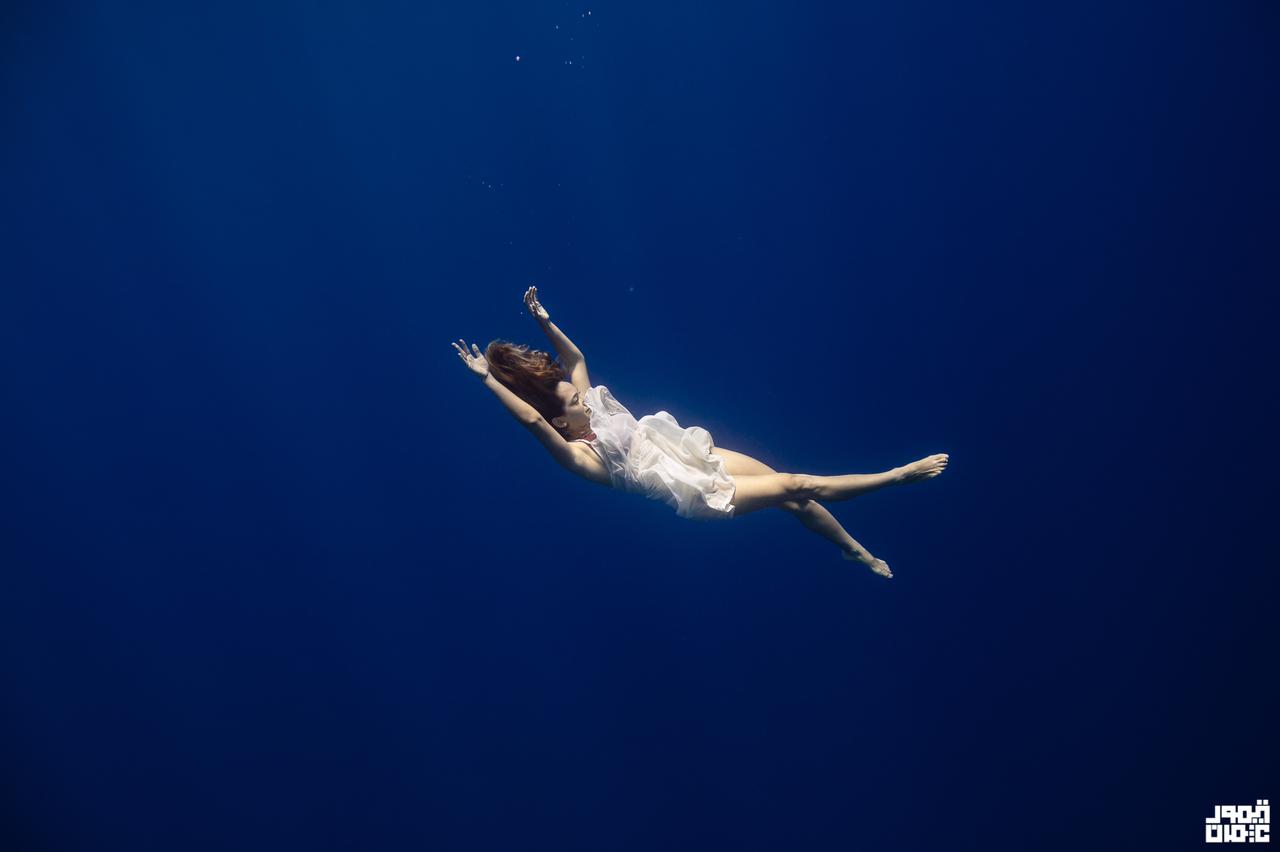The first two times Raghda tried a water massage (hydromassage), she came out of the water crying tears of pure joy. “I hugged them because I was so happy, it was a random outburst of emotions that can come out at any moment because any blocked tensions are instantly released,” she says.
But this is not just a ‘luxury’ treatment. In fact, it is an ancient technique that has been used for centuries, and water is commonly used as a therapeutic technique as it is scientifically proven to alleviate stress and anxiety. The gentle pressure of the water is strong enough to push toxins out of muscles and soft tissues, which in turn creates a feeling of weightlessness and softness that helps in alleviating pain and heavy emotions.
For years, our overactive minds ruled our entire being. Being glued to technological devices and sitting behind desks all day long, most of us have been so busy thinking, planning, organizing and plotting that we’ve forgotten the vital role that our bodies can play in influencing our lives. In her 2021 book “MOVE! The New Science of Body Over Mind,” Caroline Williams recognises that the practice of movement is seriously lacking in our society, despite the fact that there is ample scientific evidence and general knowledge about the benefits of movement.
“It’s time for the medical profession – and those who fund it – to stop treating movement as an optional extra and put some serious money behind movement-based treatments and therapies,” she says.
Raghda Ezz El Din is the founder of Blue Odysea, which offers water-based programs that allows people to experience various water movements so that they can flow, dance and express their emotions in a state of deep relaxation and pleasure. It is also one of the very first programs in the world that introduce a unique curriculum on underwater dance for women, which is rarely offered or known even globally, Raghda notes.
“Underwater dance is very new. If you search it on Google, you’ll find only two workshops available. Not many people have heard about it, and there is practically no curriculum, which is why Magdoline Nader – my ballet instructor – and myself are creating a curriculum from scratch,” she says. “I want to spread the message that this is not only for athletic people, dancers or divers, but it can be for anyone, and specifically for mothers who are stressed about their lives and children.”
Diving deep

The journey of her connection with water started very young, as Raghda Ezz ElDin’s father was a scuba diver, which inspired her to get into the same sport as well. After taking her first course in scuba diving, she immediately fell in love with it and the entire feeling of ‘flying’ in water, which was exactly the feeling she had been searching for. However, she later realized that this feeling came from the experience of being in water, and not from the sport itself.
“I loved it so much, but the only problem with it was that there were so many restrictions. For instance, you’re working on a machine and you have to know how it works, and sometimes it feels heavy to be under so many restrictions in movement,” she says.

During another trip, Raghda decided to do some snorkeling instead while everyone else near her was scuba diving. She kept practicing going deeper into the waters and resurfacing, and repeating this until she reached the ground. “I couldn’t believe that I dived that low, which was approximately 10 metres. There was an instructor who was watching me and he approached me asking if I ever did freediving. I asked him what that is and he told me that it is another sport that I will enjoy. From then on, I immediately went to Dahab and signed up for the freediving program.”
The experience of freediving or simply diving deep into the waters may sound terrifying, but Raghda says that it is in fact more simple than what many think. The first ways we can begin connecting deeper with our body can be so simple, such as simply breathing and moving, and committing to listening to our body rather than work against it.
“It is more of a mental sport than an athletic sport, as those who practice yoga and meditation are able to dive deep to lengths that have taken many other years to do the same. To advance in the sport, you need to advance in relaxation, so you use techniques such as visualization and meditation techniques. It is simply about ‘tricking your mind’, because your mind has placed a negative thought towards diving and that staying underwater for a long time is dangerous,” Raghda notes.
Raghda adds that water as an element is not new or foreign to us as mammals, but was integral to the lives of ancient human communities. “The whole idea of freediving is very ancient and lives inside of us, because humans used to dive to fish. There is a famous documentary on the Bajau nomadic tribe, who live next to the waters of the Philippines, Malaysia, and Indonesia, where they dive to hunt for fish or search for natural elements that can be used in crafts. This experience helped them to genetically adapt to diving.”

After finding herself in the sport, freediving eventually became her obsession. Raghda began competing and training in Nady el Gezira from 2 to 3 times a week. She later signed up for a competition in Dahab, and achieved two national records. “I really loved the idea and I wanted to represent Egypt and break my record, but then I started to lose the sense of being in water, and the ego started to creep in,” she says. “It started to become super stressful for me, because I was so focused on breaking records rather than the state of relaxed mind, which is why I eventually got an injury.”
The injury pushed Raghda to change her direction and focus on mindfulness and the ‘state of mind’ experience that diving can provide, founding Egypt Free Divers in 2016 with Ahmed Soliman, which included regular trips, programs and raising awareness on the new sport. “No one in Egypt knew about this sport, there were only around 40 people in the entire of Egypt that joined us and knew about it, until we started to do more marketing, press and share photos to help enlarge the community,” she says.
“After I started to get out of the mood of competition, I thought of completely changing our approach and coming back to our true purpose. Our new philosophy was that there were no instructions, no specific metres or how long they should stay in the water. It is simply a personal experience.” she says.
“We removed numbers from the equation and focused on the state of mind, revolving around mindfulness, yoga and breathwork, and developing the curriculum based on this. We wanted to teach people that water is like a mirror that reflects your personality. Much like hiking and windsurfing, each element reflects your personality when you immerse yourself in it. You look at yourself and how you behave whenever emotions arise, which means that it is a journey of self-discovery and discovering your body and mind,” Raghda adds.
Letting it flow

However, later on Raghda began to realize that most of her clients (80 percent) were men, and she wanted to find a way to include women to help destress their bodies, due to the many constraints that is imposed on them by society.
“The feeling of being underwater is what is known as sensory deprivation. Sensory deprivation is something they use for treatment nowadays. The whole point of it is because the life we are currently living is causing our senses to be bombarded with many things. It becomes like a sensory jungle. So when you enter the water, sensory deprivation happens. There are no distractions around you, and so you start to feel a sense of calm. Many use this as therapy for those who are stressed or have anxiety,” she says.
It all started by chance during her trip to Dahab, where she dived inside the water in a dress and began to freestyle. This helped spark her underwater dance videos on social media, where she is filmed by her friend Roberto D’Ugo Pardi doing random steps and stretches with music in the background, and expressing herself freely through her movements underwater.
“After the videos went viral, more girls started to message me, and so I realized that the only way to pull more girls into the activity is to include an artistic element in the program and focus on underwater dance,” she says. “It’s not like water ballet, because you have the freedom to create your own dance or discover your own dance. We teach them the basics, like how to dive down and float, but then we leave them to explore through their own senses to develop their own moves.”
Raghda organized her first trip for 15 women from different backgrounds, and rented a villa for them to carry out the underwater dance and massage program. First, they go through a massage to relax, and a few stretching exercises outside the water, then stretches inside the water before they dive down a couple of times to see how you feel and explore different body moves.
“Every woman brings out her own feminine energy. We met girls that were extremely shy before they went underwater, and then once they went in, she brought out her own feminine goddess energy and was very sensual and moved freely within her body,” she says. “In our society, there are a lot of constraints on how women act and express their personality, but after this experience, many women told me that it changed the way they feel, talk and move, and even their relationships with their partners. So, it can impact even the tiniest aspect of their lives and personality.”
“Giving women the space to do whatever they want and express their femininity, and being surrounded by the women that support her, allows them to connect with their personality completely and freely and express what they have been holding deep inside.”







Comment (1)
[…] Source link […]